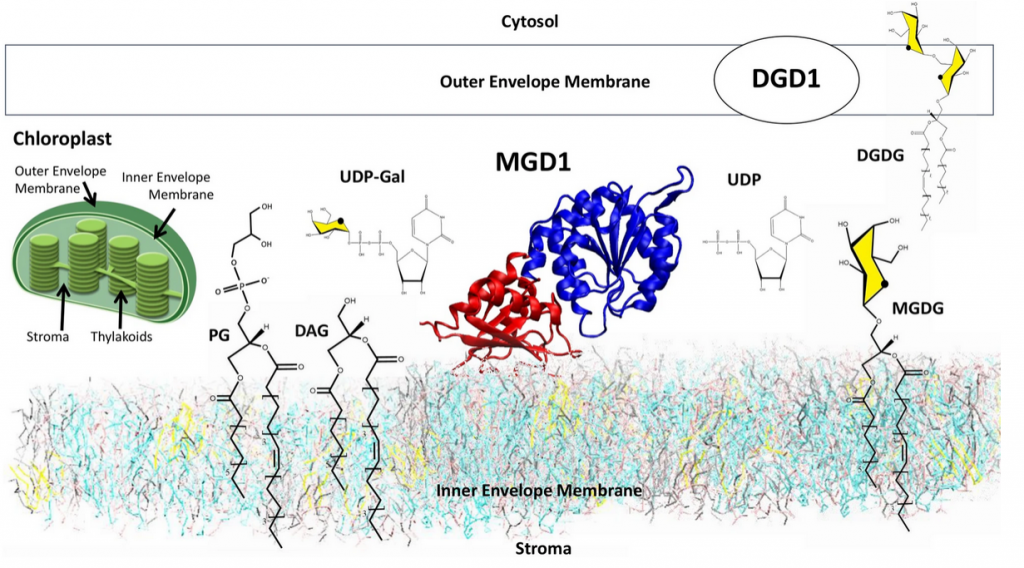Unraveling the complex enzymatic machinery making a key galactolipid in chloroplast membrane: a multiscale computer simulation

We have just published in the journal Scientific Reports (Nature Research) our work on elucidating, by multiscale numerical simulation methods, the complexity of the enzymatic machinery that supports the synthesis of galactolipids of the chloroplast membrane.
Ligand-recognizing motifs in plant LysM receptors are major determinants of specificity
We have just published the results of our international collaboration with Aarhus
University (DK), University of Cambridge (UK), University of Copenhagen (DK), University of Otago (NZ) in the prestigious journal Science.
This work reports for the first time how, legumes (soybean, alfalfa, peas…) have established a beneficial symbiosis with soil bacteria that fix nitrogen, a key nutrient, by a subtle structural evolution of a receptor common to all terrestrial plants. These results open up major prospects for the development of more sustainable agriculture by reducing the use of nitrogen fertilizers.
Lipo-chitooligosaccharides as regulatory signals of fungal growth and development

We have just published the results of our international collaboration with American Universities (University of Wisconsin – Madison, University of Tennessee – Knoxville, University of California – Santa Barbara) and Toulouse laboratories (CNRS, University of Toulouse, IRD, INRAE) in the prestigious journal Nature communications. Our work shows that lipo-chitooligosaccharides (LCOs), which are signaling molecules produced by rhizobial bacteria and by certain fungi that also establish symbiotic relationships with plants, are actually produced by many species of fungi. Our results suggest that LCOs production is common among fungi and that oligosaccharides may function as signals regulating the growth and development of fungi.


